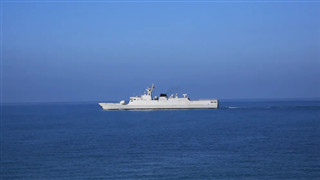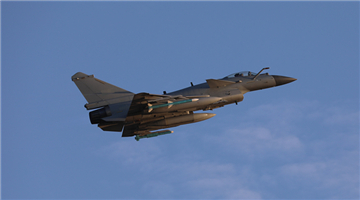By Guo Dan
The Japanese government approved on December 21 the draft budget for the 2021 fiscal year, including a record defense budget that has been rising for the 9th consecutive year to 5.34 trillionyen (51.6 billion USD).
The most conspicuous part of the defense budget is the cruise missile improvement plan and the construction of two ships equipped with Aegis missile interceptor systems as an alternative to the land-based Aegis Ashoremissile defense systems.
In December 2017, Tokyo decided to introduce two Aegis Ashore systems from the US, which were planned to be separately deployed in Akita prefecture in Japan’s north and Yamaguchi prefecture in the south to provide 24-7 protection of the entire country. However, the program was vehemently opposed by local residents.
In June this year, then defense minister Taro Kono announced to cancel the program, one of the reasons for which was that the boosters might fall into residential communities nearby after anti-missile interceptors were launched. On December 9, the new defense minister Nobuo Kishi announced to build two Aegis warships to replace the Aegis Ashore.
But the new plan was slammed by Japanese media the minute it was announced.
First of all, new warships cannot provide around-the-clock protection. Whether the ships can carry out missions is closely related to weather conditions. At the same time, the ships require reconditioning and outfitting and the Self Defense Force (JSDF) service members need training. Therefore, one ship can only implement defense tasks for about 120 days a year at most.
Second, new warships are costly. The draft budget adopted on December 21 earmarked 1.7 billion yen (16.4 million USD) for preparations to build the two new Aegis ships.While the cost to make them, as estimated by a third party, runs in the range of 480-500 billion yen (4.64-4.83 billion USD), more than the cost of the Aegis Ashore, not counting in the expenses for missile interception tests, daily maintenance and upkeep, and equipment to be installed on the ships. The two new vessels may become the most expensive maritime equipment in the history of the SDF.
Third, the Japan Maritime Self-Defense Force (JMSDF) is seriously understaffed. According to a former commander of the JMSDF Fleet Escort Force, the two new Aegis vessels have to be operated by at least 500-600 people, but the JMSDF hasn’t been able to recruit enough service members for 5 years in a row.
The Japanese government recently vowed to develop new standoff missiles capable of attacking enemy vessels outside their firing range. The draft budget passed on December 21 allocated 33.5 billion yen (324 million USD) for the renovation program of land-to-ship cruise missiles aimed at lengthening the firing range.
Restricted by Japan’s Peace Constitution and the defense-only principle, the JSDF’s missile range is limited to 200km. When Shinzo Abe was in office, the Japanese Defense Ministry planned to buy from the US and Norway long-range cruise missiles such as JASSM, LRASM, and JSM, with a maximum range of 900km.
However, Japan’s current F-15 fighter jets have to be renovated to carry these imported missiles, and the renovation program, which would cost 21.3 billion yen (206 million USD), was so costly that it was canceled from the draft budget. This means that Japan probably has shifted its focus from import to self-development.
Although Japan’s Defense Ministry insisted that their self-developed missiles don’t aim at attacking enemy bases, they nevertheless will be able to do so with their lengthened range, which is against the Peace Constitution and the defense-only principle.
Over recent years, the JSDF has been chanting its defense-only principle on a high profile on the one hand while introducing military equipment that would practically empty this principle on the other. This finesse of continuous self-fortification under cover of an ambiguous statement is bound to increase instability factors in the region and even incur a regional arms race.











